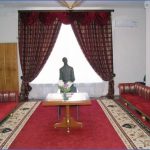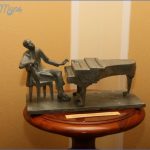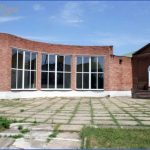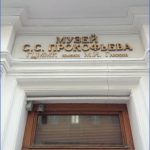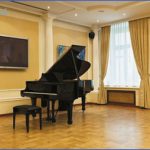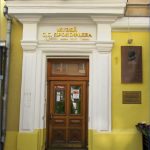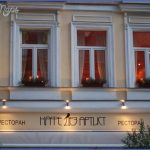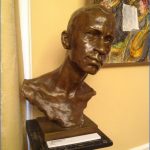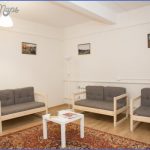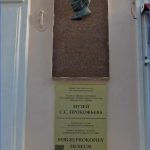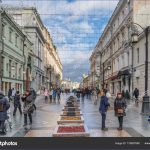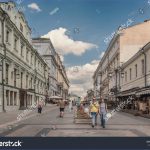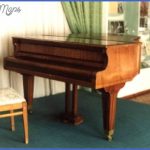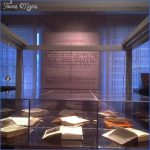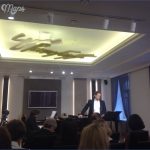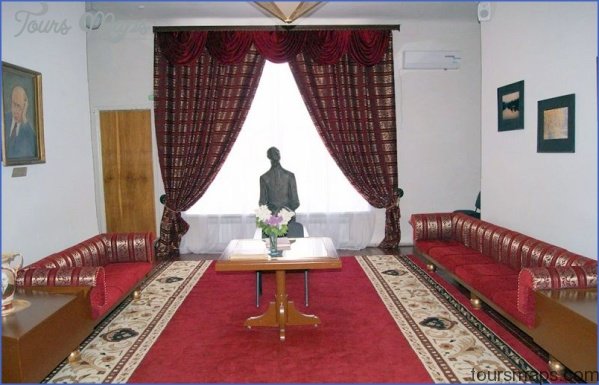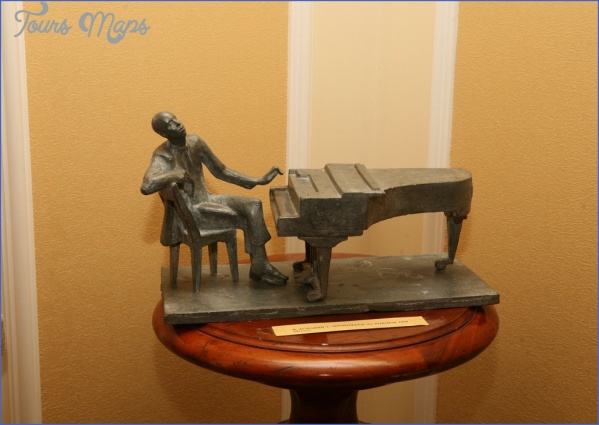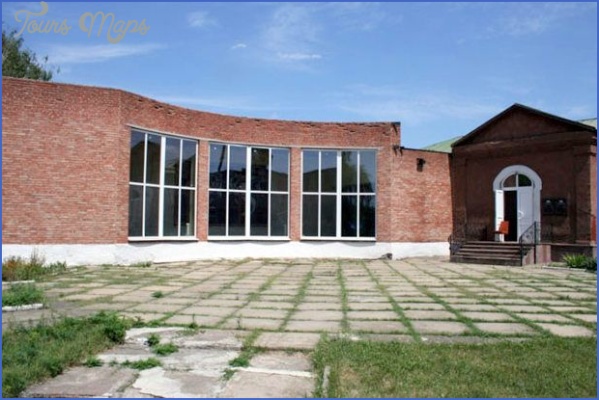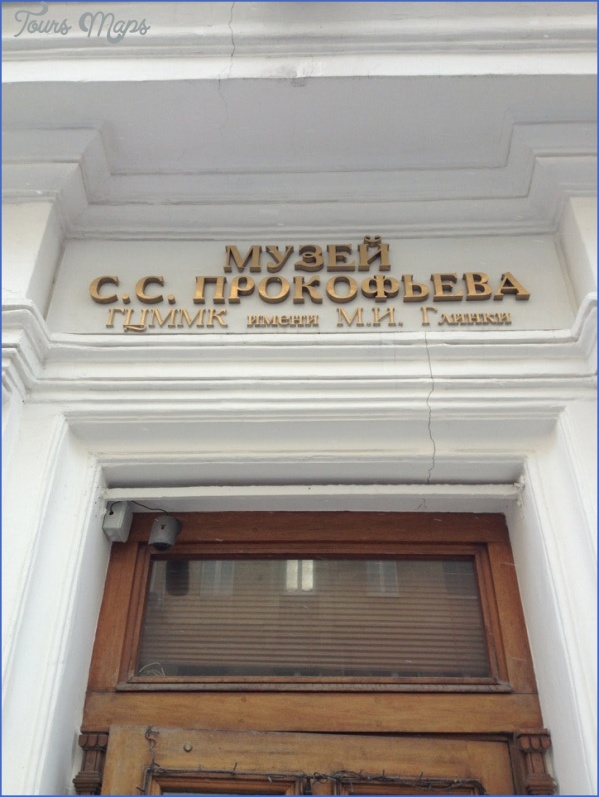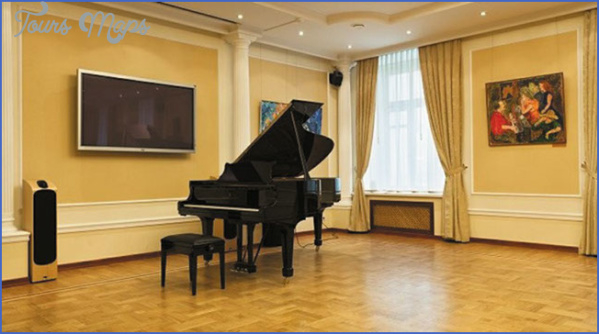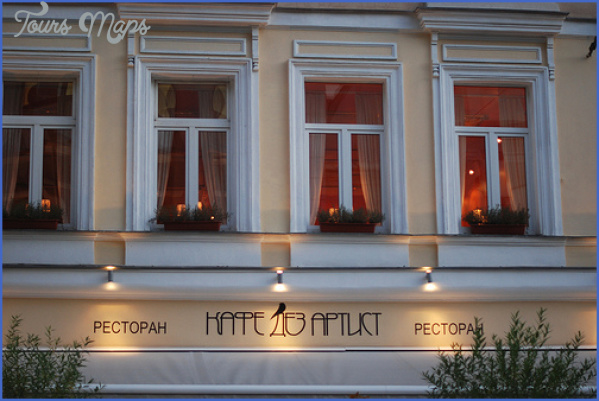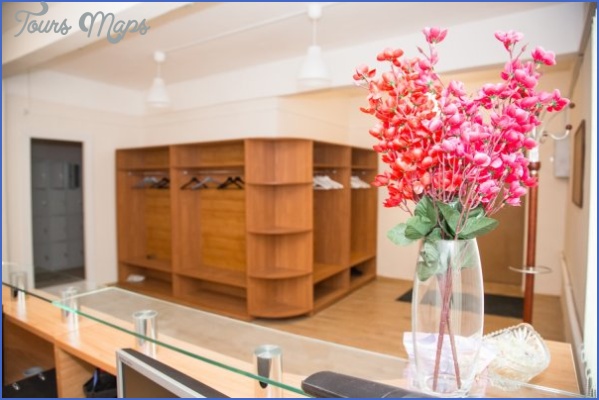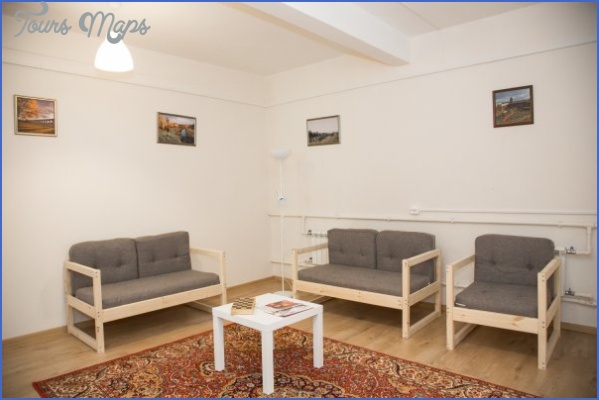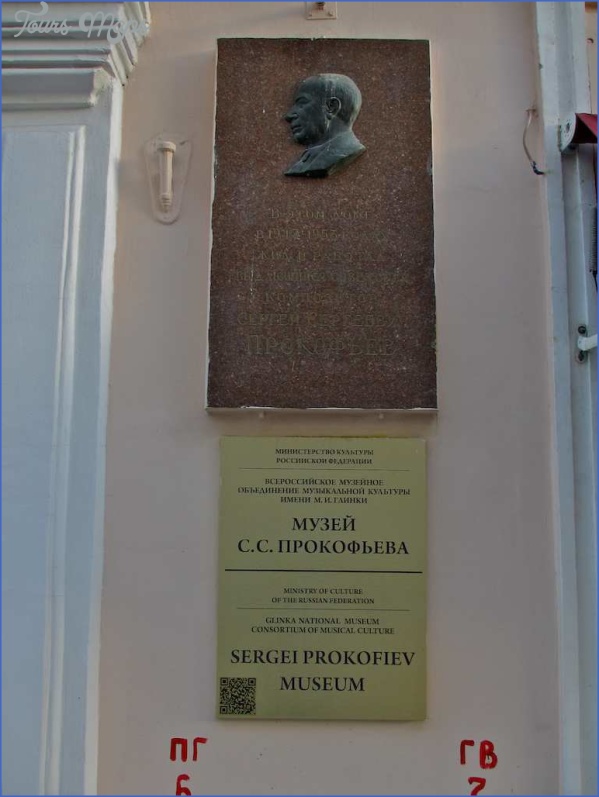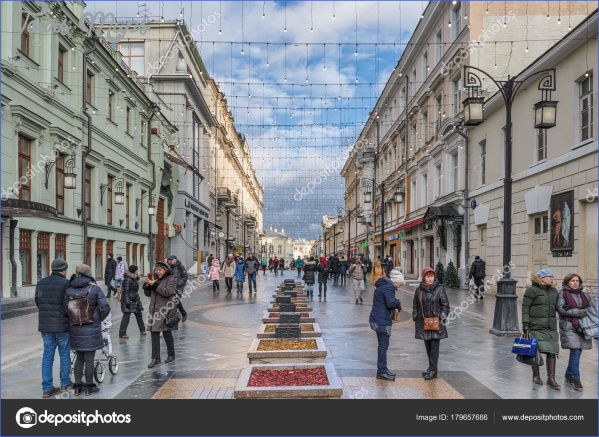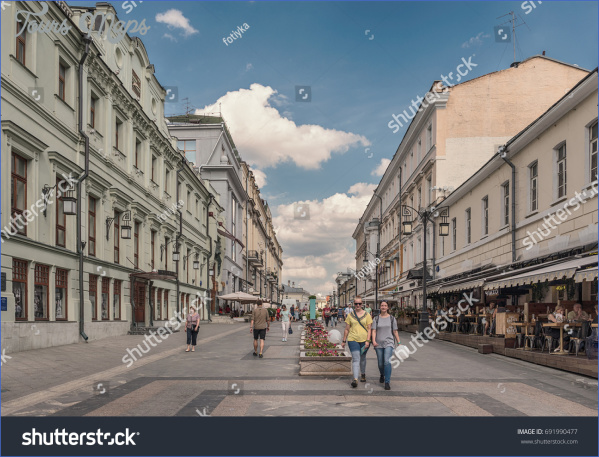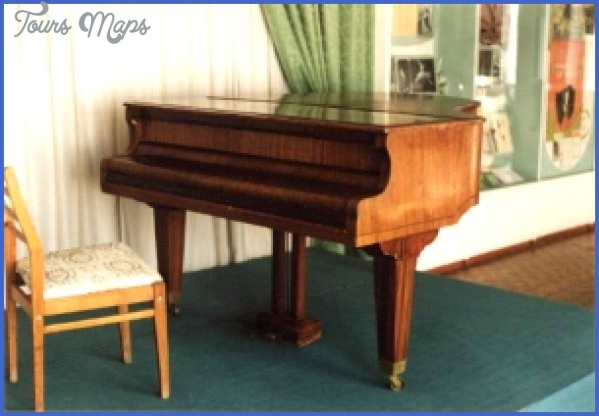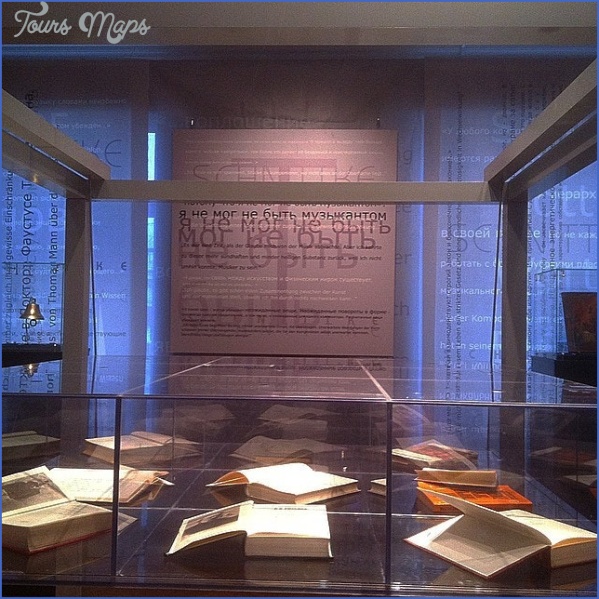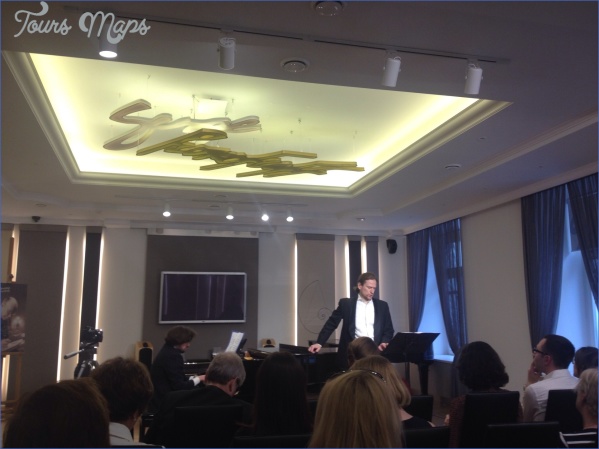PROKOFIEV MUSEUM
Prokofiev’s father, an agronomist, was working on an estate in the village of Sontsovka when in 1891 Sergey
Sergeyevich was born. The village, now called Krasnoye, is in the south-east corner of Ukraine, some 100 km north of the Black Sea coast and about 50 km west of Donets’k, near the modern towns of Kurakhovo and Ukrayns’k. Prokofiev was only 12 when he left, to enter the St Petersburg Conservatory; and in the summers, teachers (among them Reyngol’d Glier) were called to Sontsovka to work with the precociously talented boy. He graduated at the age of 18 and the next year, on his father’s death, moved to St Petersburg. From 1918 he lived abroad, mainly in the USA and in Paris; he returned to Russia in 1936, settling in Moscow, and tried to become a true Soviet composer, although his success in finding a musical style acceptable to the Soviet authorities was sporadic.
The house of his birth no longer stands; a rugged stone, bearing a commemorative plaque, marks the spot where it stood. But 400 metres away is the local school, of which his mother Marya Prokof’yeva was head teacher, and this was opened as a museum to the composer on the centenary of his birth in 1991. The first of the three rooms is devoted to his childhood and his conservatory years. There are original objects from his home, among them a dressing table and a bedside cupboard, a samovar and a gramophone as well as photo -graphs of the young Prokofiev and manuscripts of his compositions of the time; the room also contains the Schreitzer grand piano presented to him by Artur Rubinstein when he completed his studies at the conservatory.
PROKOFIEV MUSEUM Photo Gallery
The second room records his concert career at home and abroad. Exhibits refer to his concerts and his opera and ballet productions, with stage sets and costumes, a display of posters and programmes, manuscripts, letters and reviews. The third room emphasizes his connections with Ukraine, recording his productions in Ukrainian theatres, his books, stamps issued on his anniversaries and other mementoes. Outside the museum there is Displays at the Prokofiev museum, Krasnoye a rather severe bronze statue of Prokofiev, by Vasiliy Polonik, seated on a bench. There is a recital hall seating 115 people next door to the museum, and the church of SS Peter and Paul, where his parents were married and he was baptized (built in 1840, restored in 1991), is nearby. During his last years, from 1947 to his death in 1953 (on the same day, 5 March, as Stalin), Prokofiev lived in a flat in central Moscow. There has long been an intention of establishing a museum to him in his own flat and an adjoining one, under the supervision of the Glinka State Central Museum of Musical Culture (the central music museum authority in Russia and a general musical museum), which holds a large Prokofiev collection including autograph scores, letters, illustrative material from his operas, especially War and Peace, and much personal material. Parts of the flat are expected to open to select visitors during 2005. Prokofiev’s rather austere study is to be re-created following a model made in the 1950s under the supervision of his second wife, Mira Mendel’son; it will include his desk and chair, his piano, his chess set and articles of clothing. There will be a standing display ‘Prokofiev in Soviet Russia, 1934-53’ and a library with items from several collections and designed to focus on his relations with other musicians. On the first floor there is a recital room that can also be used for exhibitions.
Maybe You Like Them Too
- Explore Blavozy, France with this detailed map
- Explore East Lindfield, Australia with this detailed map
- Explore Bonferraro, Italy with this detailed map
- Explore Doncaster, United Kingdom with this detailed map
- Explore Arroyito, Argentina with this Detailed Map

